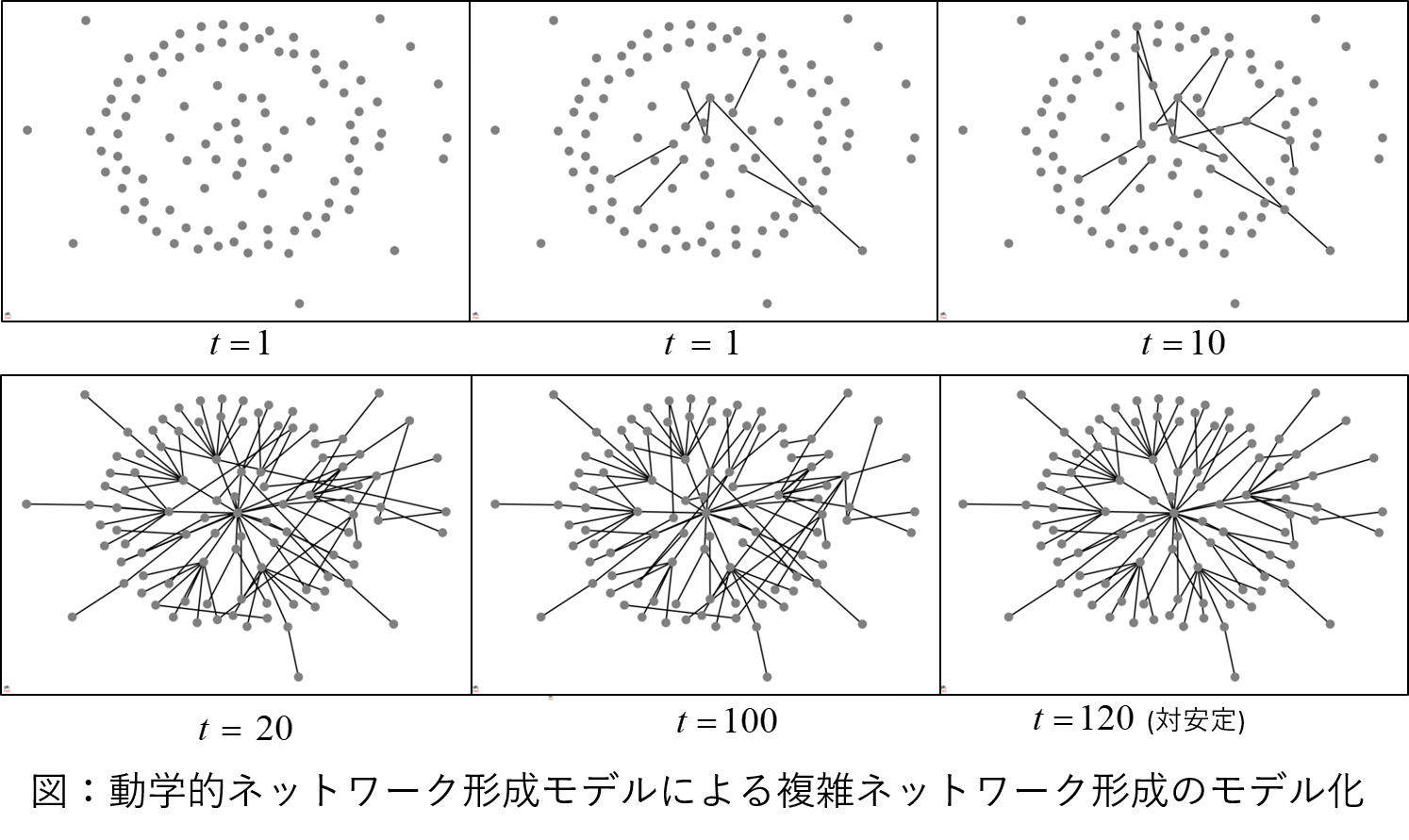Tetsuo Imai, Ph.D.
Associate Professor in School of Information and Data Sciences, Nagasaki University
Research on various patterns and phenomena in society from a network perspective
Our society is filled with various networks, such as friendship networks consisting of connections between people, networks among products purchased at the same time, and networks on the Internet.
It is becoming clear that these various networks have common characteristics, which are called
In my research, I am trying to understand the unknown state of society by clarifying the structure and function of networks latent in society, the mechanism of their formation, and the mechanism of control and guidance to realize more efficient networks, while making full use of mathematical models and computer simulations.
Specifically, I am conducting the following research.
Modeling of autonomous and decentralized social network formation
Social networks such as friendship networks can be viewed as networks constructed by individuals choosing to form edges with each other in an autonomous and decentralized manner, and can be modeled based on game theory.
We are challenging to clarify these questions by using network theory and computer simulations.




Controlling and Guiding Social Networks to Control the Spread of Infectious Diseases
The structure of social networks has a strong influence on the efficiency of infectious disease spreads.
In response to the recent spread of COVID-19, policies have been implemented to control the spread of infectious diseases by limiting human contact, but social activities have also been strongly restricted.
Toward a post-pandemic society,
We are challenging to clarify these questions through network theory, mathematical models, and computer simulations.
Analysis and Modeling of Collaboration Networks
The coauthorship network of an academic paper is a network in which authors are nodes and authors in a coauthorship relationship are connected by edges, and can be viewed as one of the social networks formed by collaboration.
In order to clarify these questions, we extracted a large number of papers from academic literature databases to construct networks of co-authors in each academic field, and then analyzed the differences in characteristics and efficiency in each academic field using network theory and large-scale data analysis techniques.


Solving local business issues through IoT and AI
Recent advances in AI and IoT technologies are enabling the automation and streamlining of various tasks that were performed by human workers previously.
For example, in factory production lines, IoT systems using sensors, cameras, and single-board computers such as Raspberry Pi can acquire and store data, and machine learning such as deep learning can be used to automate and streamline tasks such as anomaly detection and efficiency improvement that have been performed by skilled on-site workers based on their intuition and experience.
I have studied on the following related researches.
Research 1: IoTization of submergible fish cages at offshore
- Observation of the inside of fish cases using commercially available cameras and various sensors, and remote control of the inside of fish cages and feeding operations using smart phones
- Intelligent feeding to maximize growth efficiency by machine learning based on feeding and growth data



Research 2: IoTization of Factory Production Equipment and Automatic Detection of Product Abnormality Using AI
- Continuous monitoring and data acquisition by installing cameras on factory production lines
- Automatic detection of product anomalies based on machine learning and alerting
- Predictive detection of product anomalies


Related / Interesting fields
- Network Science
- Social simulatin by large scale parallel computing
- Game theory
- Complex System
- Machine Learining
- IoT
- Communication Networks
- etc.